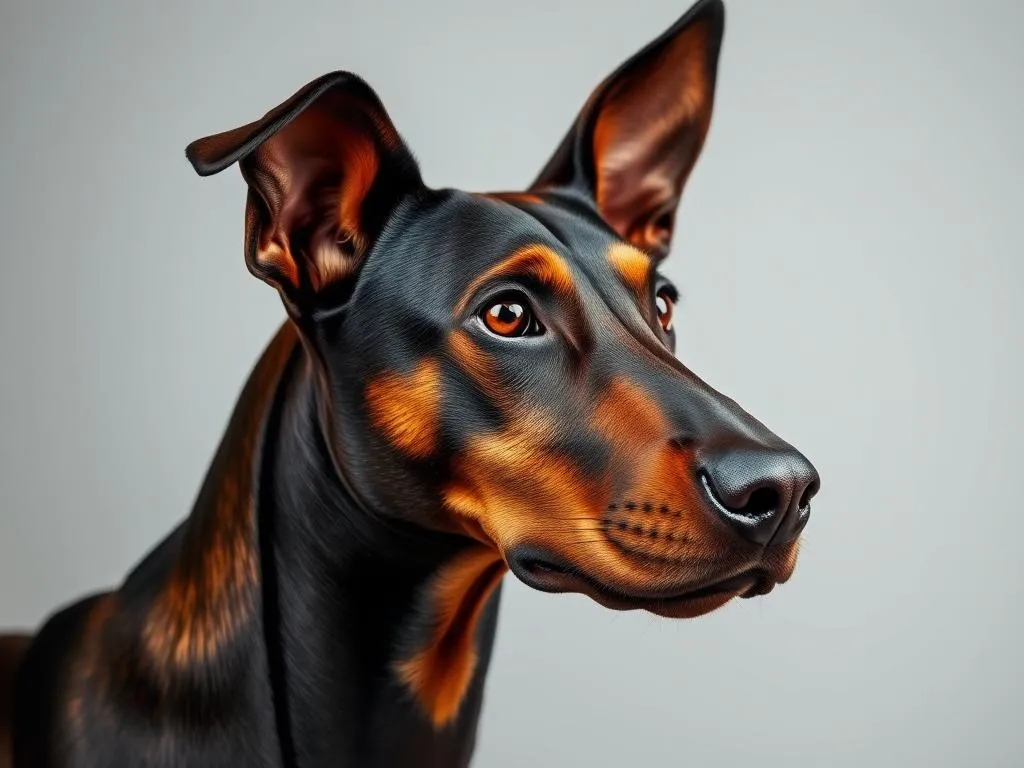
Introduction
In the world of dog health care, understanding the specific needs of various breeds is paramount. Among these breeds, the Doberman Pinscher stands out not only for its striking appearance but also for its intelligence, loyalty, and protective nature. One of the more controversial aspects of Doberman care is ear cropping, a practice that has historical roots but raises significant health and ethical considerations today. This article delves into the nuances of Doberman ear cropping, exploring its definition, procedure, health implications, and the best care practices for your Doberman’s ears.
Understanding Doberman Ear Cropping
What is Ear Cropping?
Ear cropping is a surgical procedure that involves removing a portion of a dog’s ear. Historically, this practice has been performed on various breeds, including Dobermans, to achieve a specific aesthetic that is often associated with a breed’s standard. The roots of ear cropping can be traced back to a time when it was believed that cropping would prevent ear infections and enhance a dog’s ability to hear during hunting or guarding activities. Today, however, the primary rationale often leans towards the aesthetic appeal and the breed’s traditional look.
Common cropping styles vary, with some owners preferring a more rounded look while others opt for a sharper, more erect appearance. Each style has its own set of considerations regarding healing and ear maintenance.
Reasons for Ear Cropping
The motivations behind Doberman ear cropping can be broadly categorized into aesthetic and health reasons.
-
Aesthetic reasons: Many owners crop their Doberman’s ears to conform to breed standards set by various kennel clubs. The cropped ears are often perceived as more intimidating, which aligns with the breed’s reputation as a guard dog.
-
Health reasons: While some proponents argue that cropping can reduce the risk of ear infections, this claim is largely debated among veterinarians. It’s vital to understand that proper ear care, regardless of cropping, significantly minimizes infection risks.
Additionally, ear cropping can influence a dog’s behavior and communication. Dogs use their ears to express emotions and communicate with other dogs and humans. Changes in ear structure may impact these non-verbal signals, potentially leading to misunderstandings.
Legal Considerations
The legality of ear cropping varies by region. In some countries, such as the UK and Australia, the practice is illegal or heavily restricted, while in others, it remains a common practice among breeders and owners. Ethical debates surrounding ear cropping often focus on the welfare of the animal, raising questions about whether it is necessary or humane. Understanding the laws and ethical implications in your area is essential for responsible dog ownership.
The Ear Cropping Procedure
Pre-Procedure Considerations
Before proceeding with ear cropping, there are crucial factors to consider. The ideal age for cropping is typically between 8 to 12 weeks, as the cartilage is still pliable, making it easier for the ears to stand post-surgery. Additionally, the overall health of your Doberman must be assessed. A qualified veterinarian should evaluate your dog to ensure it is fit for anesthesia and surgery.
Choosing a veterinarian with experience in ear cropping is essential. Look for recommendations and reviews from other Doberman owners to find a reputable specialist who prioritizes the health and comfort of your dog.
The Surgical Process
The ear cropping surgery itself is relatively straightforward and typically performed under general anesthesia. Here’s a brief overview of the steps involved:
- Preparation: Your Doberman is prepped for surgery, which may include fasting and ensuring a clean area.
- Anesthesia: The dog is placed under general anesthesia to ensure it feels no pain during the procedure.
- Surgical Removal: The veterinarian makes precise incisions to remove the desired portion of the ear.
- Closure: The incisions are stitched, and the ears are shaped according to the chosen cropping style.
- Post-Op Monitoring: The veterinarian monitors your Doberman as it wakes from anesthesia.
Pain management is crucial during this process. Your veterinarian will likely prescribe pain relief medications to keep your dog comfortable during recovery.
Post-Procedure Care
After ear cropping, immediate care is vital for a successful recovery. Here are some key care tips:
- Follow-Up Visits: Schedule follow-up appointments to monitor the healing process and remove stitches if necessary.
- Keeping Ears Clean: It’s essential to keep the ears clean and dry. Your veterinarian may recommend specific cleaning solutions.
- Protecting the Ears: Use protective collars as advised to prevent your Doberman from scratching or rubbing its ears.
Healing can take several weeks, during which time your Doberman may require additional support, such as a quiet space to rest and minimize stress.
Health Implications of Ear Cropping
Potential Risks and Complications
While many owners may focus on the aesthetic appeal of Doberman ear cropping, it’s crucial to consider the potential health risks involved. Common complications include:
- Infections: The surgical site can become infected if not properly cared for.
- Bleeding: Excessive bleeding may occur, necessitating additional veterinary intervention.
- Scarring: Improper healing can lead to scarring or deformities in the ear shape.
Long-term health concerns can also arise, such as a higher susceptibility to ear infections, sensitivity to temperature changes, and altered hearing.
Behavior and Communication Changes
Ear cropping can also impact a Doberman’s behavior. With cropped ears, the dog might communicate differently with other dogs, as they rely heavily on ear position to convey emotions. Dogs with cropped ears may be perceived as more aggressive or intimidating, affecting social interactions. Understanding these behavioral changes is crucial for responsible dog ownership.
Alternatives to Ear Cropping
For those who prefer not to crop their Doberman’s ears, there are alternatives. Natural ear care practices, such as regular cleaning and moisture control, can help maintain ear health without surgery. Additionally, some owners opt for non-surgical aesthetic options, such as ear taping, which can enhance ear shape without invasive procedures.
Caring for Your Doberman’s Ears
Regular Ear Maintenance
Maintaining your Doberman’s ears is essential for overall health. Regular cleaning and inspection can help prevent infections and other ear-related issues. Use a gentle, vet-recommended ear cleaner, and follow these steps:
- Inspect: Check for redness, swelling, or discharge.
- Clean: Apply the cleaning solution and gently wipe the inner ear with a soft cloth or cotton ball.
- Dry: Ensure the ears are thoroughly dried to prevent moisture buildup.
Signs of Ear Problems
Being vigilant about potential ear problems can save your Doberman from discomfort. Common symptoms of ear issues include:
- Excessive scratching or rubbing of the ears
- Foul odor emanating from the ears
- Redness or swelling
- Discharge from the ear canal
If you notice any of these signs, seek veterinary assistance promptly.
Promoting Overall Ear Health
Promoting ear health goes beyond cleaning. A balanced diet rich in Omega-3 fatty acids can support skin and ear health. Regular exercise also contributes to overall well-being, which indirectly benefits ear health.
Conclusion
In summary, Doberman ear cropping is a multifaceted topic with both aesthetic and health considerations. Understanding the procedure, potential risks, and best practices for ear care is essential for any Doberman owner. It’s crucial to make informed decisions about ear cropping, always prioritizing your dog’s overall health and well-being. Whether you choose to crop your Doberman’s ears or not, consistent ear maintenance and care will contribute significantly to your dog’s quality of life.
FAQs
What is the ideal age for Doberman ear cropping?
The ideal age for Doberman ear cropping is between 8 to 12 weeks, as this allows for easier healing and shaping of the ears.
Does ear cropping hurt my Doberman?
While ear cropping involves surgery, qualified veterinarians provide anesthesia and pain management to minimize discomfort during and after the procedure.
Can I choose not to crop my Doberman’s ears?
Yes, there are many Doberman owners who choose not to crop their dog’s ears. Proper ear care can maintain ear health without surgical intervention.
What are the signs of an ear infection?
Signs of an ear infection include excessive scratching, foul odor, redness, swelling, and discharge from the ear. If you notice these symptoms, consult your veterinarian.
Are there non-surgical alternatives to ear cropping?
Yes, alternatives include ear taping and maintaining proper ear hygiene to enhance ear shape without surgery.
In conclusion, whether you are considering Doberman ear cropping or simply looking to maintain your Doberman’s ear health, it’s essential to stay informed and prioritize your furry friend’s well-being.









